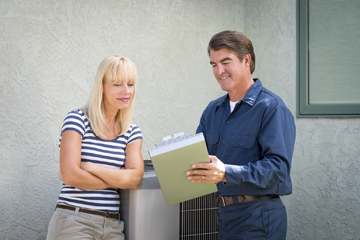It could happen during the most scorching week of summer or the coldest night of the year. System breakdowns are inconvenient and unpredictable. But with a good service agreement, homeowners can count on reliable service. Just like vehicles need regular maintenance, home comfort systems also need regular preventative maintenance. Regular maintenance of the heating, ventilation and air conditioning system lowers the chances of expensive repairs, increases the working life of the system, and improves efficiency.
Industry studies have revealed the benefits of a service agreement. Regular HVAC maintenance can decrease the frequency of repairs by up to 40%, which translates to massive savings as well as avoidance of disrupted indoor comfort. Additionally, homeowners who enter into a service agreement can count on lower utility costs due to improved efficiency. In fact, regular preventative maintenance can lower a HVAC unit’s consumption of natural resources by 30%, and increase its working life by 30%. Essentially, regular maintenance is the most cost–effective and savvy way to keep the comfort system running at peak efficiency.
What to Consider when Purchasing a Service Agreement
Many HVAC contractors offer service plans when homeowners are installing a new system or repairing an older one. Such contracts can be a blessing; however, they can also be a waste of money. Therefore, it is important to understand what such contracts are and what they offer to make a wise and informed choice. Service agreements are contracts between a homeowner and a contractor whereby the homeowner pays a set fee for ongoing maintenance of his/her heating and cooling system. With most standard contracts, the service involves a check–up and tune–up of the HVAC system at the beginning of the summer and winter seasons. However, other contracts may also include service and parts for issues found during the process, while others may include emergency service.
During maintenance visits, technicians use a checklist of tasks to perform and components to check. In addition to checking and cleaning both the indoor and outdoor coils, the technicians will also change the filter, remove any blockages in pipes, check the fan, and lubricate all moving parts. They will also test the thermostat, check and repair leaks, replace worn belts, recharge refrigerant, tighten loose connections, and check amp draws.
Homeowners who do not have a maintenance agreement in place should consider purchasing one as soon as possible to get the best out of their systems. Call us for all of your home HVAC needs.

